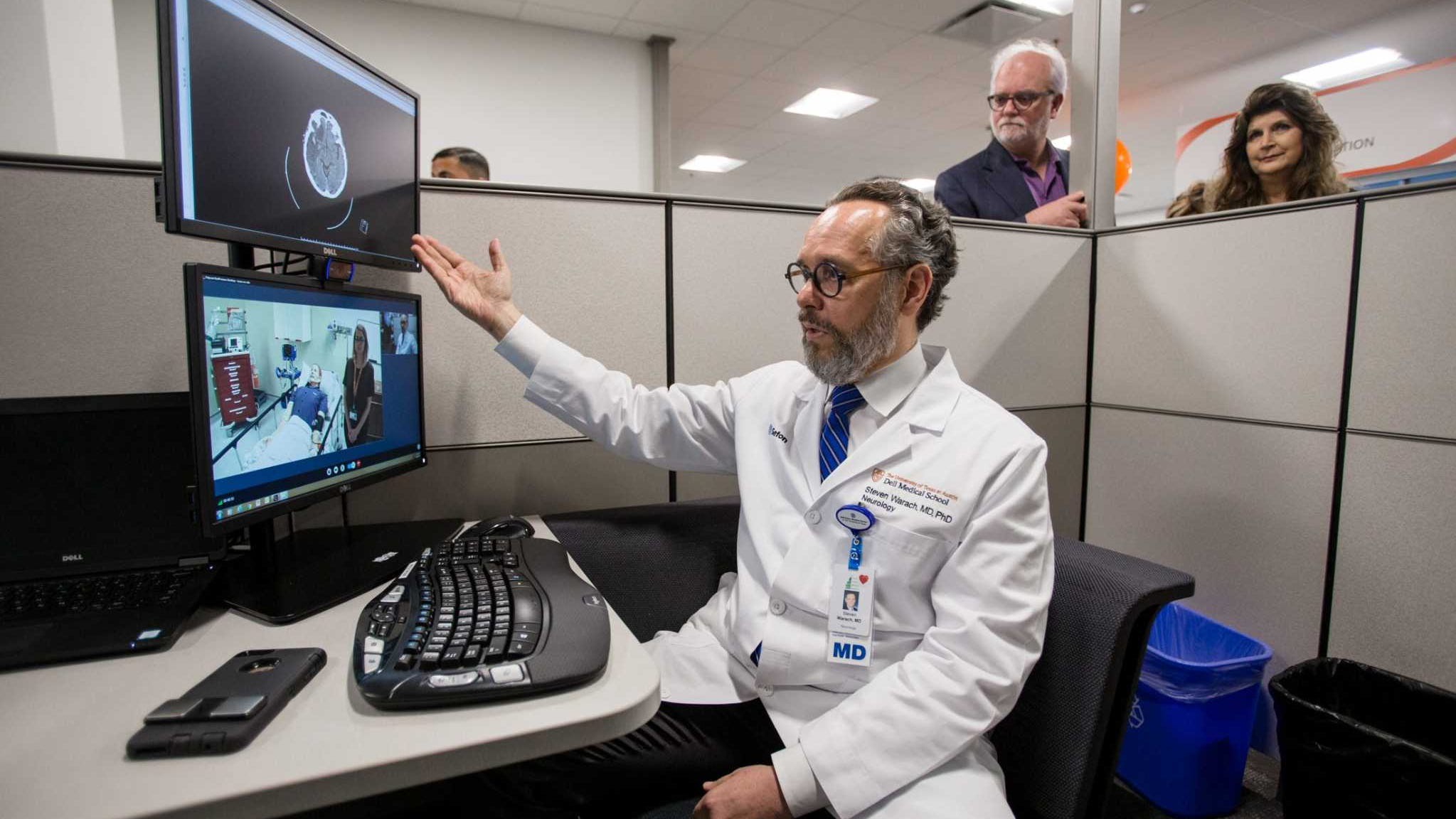news
Stroke study at University of Texas helps answer treatment questions
UT Dell Medical School study helps solve question of when to start blood thinners after a stroke in someone with AFib.
Published July 25, 2025 at 11:00am

If you had a stroke and an irregular heartbeat known as atrial fibrillation, should you start blood thinners to prevent another stroke? And if so, when should those blood thinners be started?
For years, doctors only had broad guidelines to answer those questions. They relied on their experiences with previous patients to guide them.
"There were no clinical trials, just clinical experience," said Dr. Steven Warach, a vascular neurologist and neuroscientist at Dell Medical School at the University of Texas. Most doctors, he said, agreed that an anticoagulate, or blood thinner, should be started within two weeks of a stroke and preferably before leaving the hospital.
Atrial fibrillation, commonly known as AFib, is an irregular heartbeat that can cause clots to form and go into the brain, causing a stroke. About 20% to 30% of all ischemic strokes are caused by AFib, and these strokes can be more debilitating than ischemic strokes not caused by AFib.
Then, at an international stroke conference about eight years ago, Warach and his stroke doctor colleagues were talking about when to give blood thinners and realized that four separate clinical trials were underway or about to be launched to answer this question. Instead of doing one large study, they decided to continue to do the four separate studies and then pool the study data together to see if they found similar results.
Warach led one of the studies that collected data from six university-based stroke centers in Texas.
Once all four studies were done, they had data from 5,441 participants. The data in each study found that giving the anti-coagulate earlier seemed to be better than later. When all the data for the four studies were pulled together, they found statistical significance and an answer.
A paper on these findings was published this month in the medical journal "The Lancet."
Giving the anti-coagulate within the first four days after having a stroke led to one-third fewer secondary strokes within the first 30 days.
There was no increase in brain hemorrhages, which was one of the fears about giving blood thinners to people who have had a stroke and was a common side effect with older generations of blood thinners like warafin and heparin. The new direct-acting anti-coagulates like Eliquis and Xarelto are less likely to cause brain hemorrhages and don't require people to avoid eating vitamin K-rich foods like spinach, garlic or avocados. Vitamin K naturally helps blood clot.
The study's findings apply only to people who have had the clot or blockage-caused stroke (ischemic), not the brain bleed kind (hemorrhagic stroke), and it is only for people who have been diagnosed with AFib or have shown evidence of it. A person who has had an ischemic stroke with AFib still needs to wait 24 hours after receiving clot-busting medications before starting the anti-coagulate, but that usually is within that first four-day window.
People would continue to take the anti-coagulate throughout their life unless they have been able to fix the AFib through an ablation procedure, which destroys the area of the heart that causes the irregular heartbeat, or by inserting a left atrial appendage closure to stop blood clots in the heart from getting into the rest of the body.
How to spot a stroke
The phrase to remember is BE FAST.
- Balance (loss of balance, dizziness or headache).
- Eyes (blurred vision, double vision or peripheral vision problems).
- Face (one side of the face is drooping).
- Arms (weakness in an arm or a leg).
- Speech (difficulty speaking or understanding words)
- Time (time to call for an ambulance immediately to get help).

